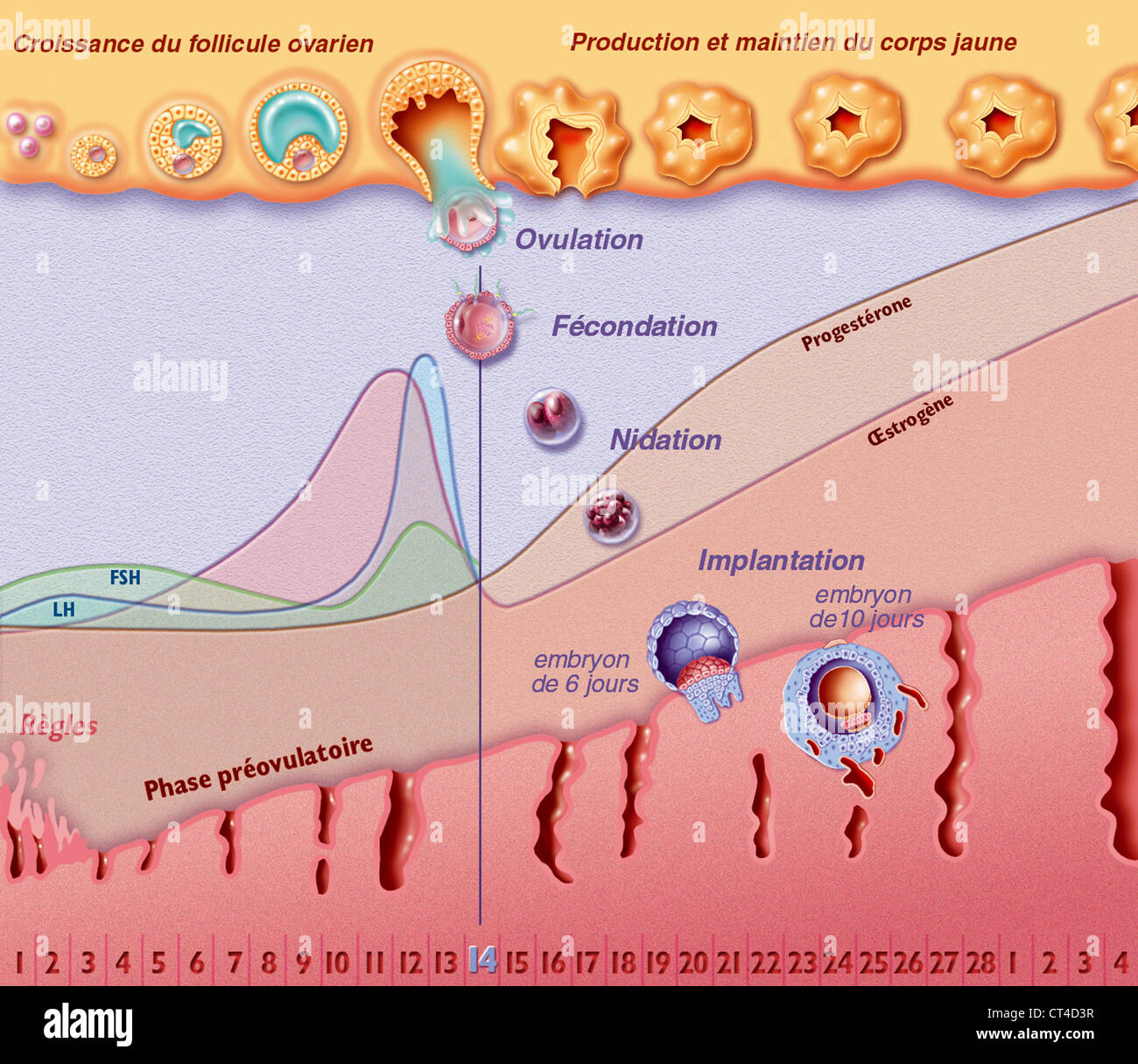MENSTRUAL CYCLE, DRAWING

Image details
Contributor:
BSIP SA / Alamy Stock PhotoImage ID:
CT4D3RFile size:
32.7 MB (1.7 MB Compressed download)Releases:
Model - no | Property - noDo I need a release?Dimensions:
3630 x 3144 px | 30.7 x 26.6 cm | 12.1 x 10.5 inches | 300dpiDate taken:
22 November 2006Photographer:
JACOPIN / BSIPMore information:
The menstrual cycle fertilization the top to the bottom : ovarian cycle hormonal cycle uterine cycle The menstrual cycle is divided into two phases : the follicular phase (or proliferative) pre-ovulatory the luteal phase (or secretory) post-ovulatory The follicular phase : Inside the ovary the ovarian follicles carrying the ovocytes develop (primordial follicle primary secondary tertiary) At the same time the hypothalamic hormone GnRH provokes the cyclic secretion two hypophyseal hormones the gonadotrophins LH (luteinizing hormone) FSH (follicle-stimulating hormone) The FSH (in green) enables the evolution the ovarian follicles assures the maturation Graafian follicule by cycle On the fourteenth day the cycle the simultaneous release strong dose FSH LH (in light blue) into the blood trigger ovulation : mature tertiary follicle (or Graafian follicle) ejects the ovocyte II it contains At the level the uterus the endometrium is preparing to receive possible embryo : it thickens the uterine glands develop The luteal phase : Inside the ovary under the action LH the Graafian follicle emptyied its content or dehiscent follicle degenerates into corpus luteum ; it is follicular atresia The combined action LH FSH is responsible the secretion estrogen progesterone by the corpus luteum The endometrium pursues its maturation the uterine glands secrete glycogen the possible nutrition the futur embryo The beginning pregnancy : In case fertilization the ovum becomes zygote then embryo that starts its development while transiting into the fallopian tube heading towards the uterus The embryo then produces hormone the HCG that enables the maintain the corpus luteum then the synthesis estrogen progesterone The adequate equilibrium hormones enables the implantation this embryo within the uterine mucous membrane (sixth day after fertilization) These hormones also assure the thickening the uterine mucous membrane under the embryo prevent menstruation happening.